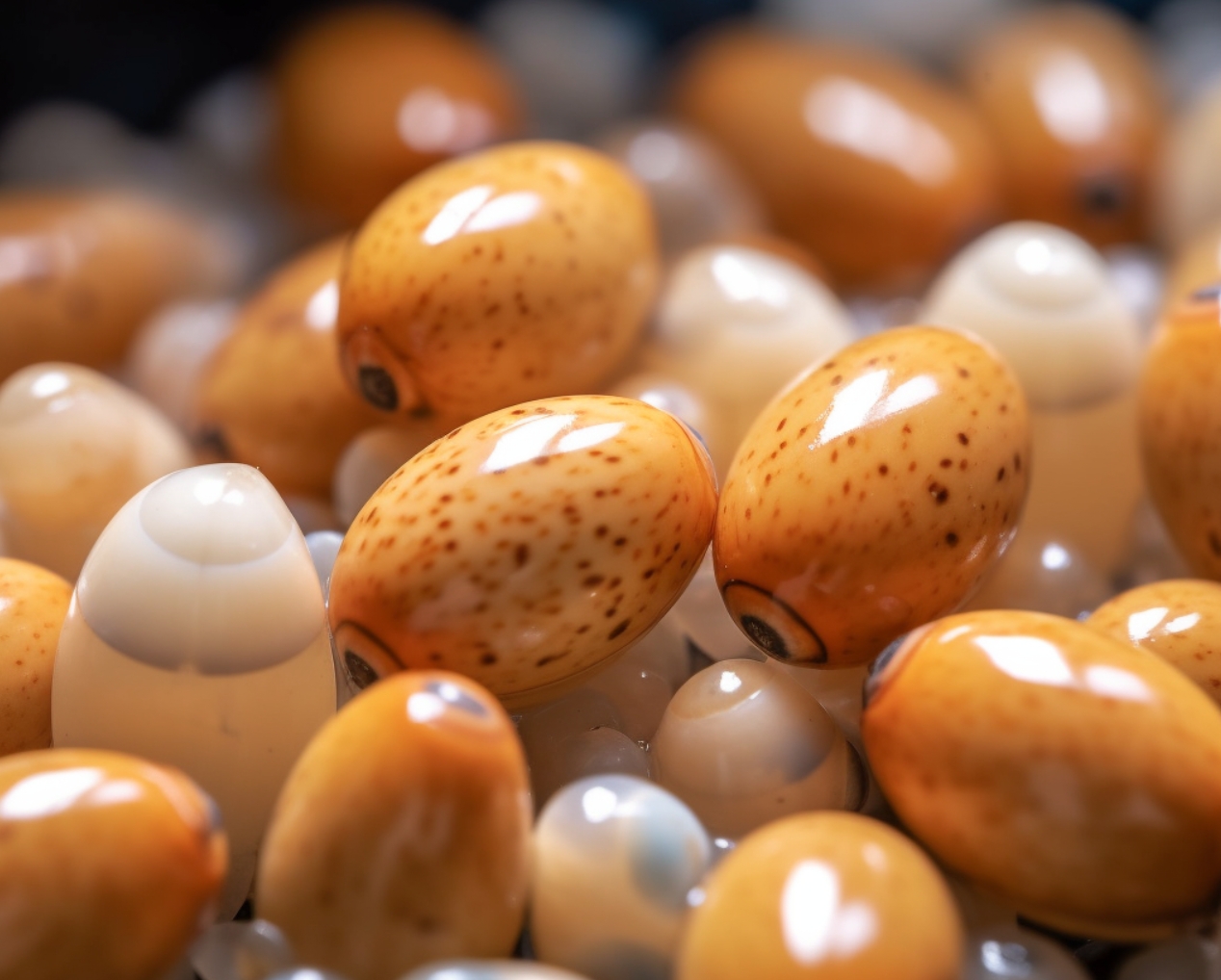Meet the baby German cockroach, a tiny creature that might be crawling in your home without you even knowing it. In this comprehensive guide, we’ll take you through everything you need to know about this common household pest. From identifying baby German cockroaches to understanding their life cycle and nesting habits, we’ll provide practical advice for dealing with these unwelcome intruders. And for those in search of a solution, we’ll discuss some popular pest control brands that can help you get rid of these pests for good.
Identifying Baby German Cockroaches
Contents
Baby German cockroaches, also known as nymphs, are small, wingless insects that can be challenging to spot due to their size and color. As they grow, their appearance changes. At first, they are about 1/8-inch long and have a dark brown, almost black color with a shiny body. As they grow, their size increases, and they develop the characteristic two dark stripes on their back.
Understanding the Life Cycle
German cockroaches have a short life cycle, with the entire process taking about 100 days from egg to adult. The life cycle begins when a female German cockroach lays an ootheca, or egg case, containing up to 50 eggs. After about 30 days, the eggs hatch, and the baby German cockroaches emerge.
As nymphs, they’ll go through multiple molting stages, shedding their exoskeletons to grow larger. During this time, they’ll gradually develop the features of an adult German cockroach, such as wings and reproductive organs. Once they reach adulthood, they’ll start reproducing, and the cycle continues.
Nesting Habits
It’s essential to know where German cockroaches nest to control their population effectively. These pests are drawn to warm, humid areas with easy access to food and water. Common nesting sites include kitchens, bathrooms, and laundry rooms. They often hide in crevices, under appliances, or within cabinets and drawers.
Controlling Baby German Cockroaches
If you’ve discovered baby German cockroaches in your home, it’s crucial to act fast. These pests reproduce rapidly, and a small infestation can quickly grow out of control. There are several ways to address a baby German cockroach problem, from home remedies to professional-grade solutions.
Home Remedies
While not always the most effective, home remedies can be a good starting point for dealing with a minor infestation. Common DIY solutions include:
- Baking soda and sugar: Mix equal parts of these ingredients to create a lethal bait that attracts and kills cockroaches.
- Borax: Sprinkle borax powder in areas where you’ve spotted baby German cockroaches to help eliminate them.
- Essential oils: Create a repellent spray using essential oils like peppermint or lavender mixed with water.
Advion Cockroach Gel Bait
For a more powerful solution, consider using Advion Cockroach Gel Bait. This highly effective product contains indoxacarb, a potent insecticide that targets the cockroach’s nervous system. When the roaches consume the bait, they return to their nest and spread the insecticide to others, resulting in a domino effect that can eliminate the entire colony. To use Advion, simply apply small dots of the gel in areas where you’ve seen baby German cockroaches or suspect their presence.
Monitoring and Maintaining a Cockroach-Free Home
Keeping your home free of baby German cockroaches requires ongoing vigilance. Here are some additional tips for monitoring and maintaining a roach-free environment:
- Use sticky traps: Place sticky traps in strategic locations around your home to monitor for any new cockroach activity. Check the traps regularly and replace them as needed.
- Inspect grocery bags and packages: Cockroaches can hitch a ride into your home through grocery bags, cardboard boxes, and other packages. Inspect these items before bringing them indoors.
- Be cautious with second-hand items: When acquiring used furniture or appliances, carefully inspect them for signs of cockroach activity before bringing them into your home.
- Consider routine pest control treatments: Engage a professional pest control service to perform routine inspections and treatments, ensuring that your home remains protected from cockroaches and other pests.
Recognizing the Signs of a Re-infestation
Even after you’ve successfully eliminated a baby German cockroach infestation, it’s crucial to stay vigilant and watch for signs of re-infestation. Some indicators that cockroaches may have returned include:
- Droppings: Cockroach feces resemble coffee grounds or black pepper and are often found in areas where they feed or hide.
- Egg cases: Keep an eye out for cockroach oothecae in crevices and other hiding spots, as they may signal a new generation of roaches.
- Unusual odors: A musty, unpleasant smell can be a sign of a large cockroach infestation, as these insects produce pheromones that can create a distinct odor.
- Dead roaches: Finding dead cockroaches in your home may indicate that a new infestation is underway.
If you notice any of these signs, take immediate action to address the problem and prevent it from escalating.
When to Call a Professional
While DIY solutions and preventative measures can be effective in controlling baby German cockroach infestations, there are times when it’s best to call in a professional. If you’ve tried multiple treatments and the problem persists or if the infestation has become extensive and widespread, it’s time to consult a professional pest control service.
A professional exterminator will assess the situation, identify the root cause of the infestation, and implement a tailored treatment plan to eliminate the cockroaches and prevent future problems. They may also provide ongoing monitoring and maintenance services to ensure your home remains pest-free.
The Importance of Educating Yourself and Others
Knowledge is power when it comes to dealing with baby German cockroach infestations. By educating yourself and sharing your knowledge with friends, family, and neighbors, you can help prevent the spread of these pests and contribute to healthier living conditions for all.
- Attend workshops or webinars: Local pest control companies or extension offices may offer educational workshops or webinars about cockroach prevention and control. Attending these events can provide valuable information and help you become more informed.
- Read articles and resources: Stay up-to-date with the latest information on cockroach control by regularly reading articles, blogs, and research studies. This will help you stay informed about new developments in pest control methods and technologies.
- Share your experiences: If you’ve dealt with a baby German cockroach infestation, share your story and the solutions that worked for you. This can help others who may be facing a similar problem and provide them with valuable insights.
Exploring Natural Predators and Biological Control
In addition to chemical treatments and home remedies, you might also consider using natural predators as a form of biological control against baby German cockroaches. Some of the most common natural predators of cockroaches include:
- Spiders: Many spider species feed on cockroaches, including the common house spider and the huntsman spider. Encouraging a healthy spider population in your home can help keep cockroach numbers in check.
- Centipedes: Centipedes are natural predators of cockroaches and can help reduce their population by feeding on them. However, be aware that some centipede species can bite and may not be suitable for households with small children or pets.
- Parasitic wasps: Some species of parasitic wasps, such as the ensign wasp, lay their eggs inside cockroach oothecae. When the wasp larvae hatch, they consume the developing cockroach nymphs, reducing their population.
While these natural predators can help control baby German cockroach populations, they may not be enough to eliminate a severe infestation. In such cases, it’s still essential to use targeted treatments and preventative measures to protect your home.
In conclusion, dealing with a baby German cockroach infestation requires a multi-pronged approach, including prompt action, effective treatments, ongoing monitoring, and, in some cases, professional assistance. By staying informed and taking a proactive approach to cockroach control, you can maintain a clean, healthy living environment and protect your home from these persistent pests.
FAQs about Baby German Cockroach
What do baby German cockroaches look like?
Baby German cockroaches, also known as nymphs, are small, wingless insects that are about 1/8-inch long when they first hatch. They have a dark brown, almost black color with a shiny body. As they grow, they develop the characteristic two dark stripes on their back.
How long does it take for a baby German cockroach to become an adult?
The entire life cycle of a German cockroach, from egg to adult, takes about 100 days. The nymphs go through multiple molting stages, shedding their exoskeletons to grow larger and develop adult features such as wings and reproductive organs.
How can I get rid of baby German cockroaches?
To get rid of baby German cockroaches, you can try home remedies such as a baking soda and sugar mixture or use commercial products like Advion Cockroach Gel Bait. Maintaining cleanliness, sealing entry points, and eliminating moisture sources in your home are also essential for controlling their population.
Are baby German cockroaches dangerous?
While baby German cockroaches do not bite or sting, they can pose health risks due to their ability to spread bacteria and allergens. They can contaminate food and surfaces, which can lead to foodborne illnesses and exacerbate allergies or asthma.
How can I prevent a baby German cockroach infestation?
To prevent a baby German cockroach infestation, you should seal entry points, maintain a clean and dry living environment, store food in sealed containers, and fix any leaks or moisture issues in your home. Regular inspections and monitoring with sticky traps can also help detect and prevent infestations.
How do I know if I have a baby German cockroach infestation?
Signs of a baby German cockroach infestation include seeing live or dead cockroaches, finding their droppings (which resemble coffee grounds), spotting egg cases (oothecae), or noticing a musty, unpleasant odor in your home. If you observe any of these signs, take action to address the problem and prevent it from escalating.


